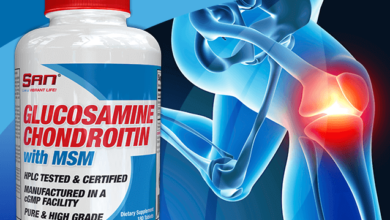Alternative Approaches to Transvaginal Mesh in Prolapse Repair

Imagine a world where the simplest tasks, like walking or laughing, become a constant battle. For millions of women, this harsh reality stems from Pelvic Organ Prolapse (POP), a condition that disrupts the delicate balance of the pelvic floor.
Initially, transvaginal mesh offered a glimmer of hope for POP repair, promising a return to normalcy. However, recent years have cast a shadow of doubt, raising concerns about the long-term safety and effectiveness of this approach.
But what lies beyond the mesh? The good news is that the medical landscape is evolving, with encouraging developments in the realm of safer and more durable pelvic repair options.
In this blog post, we will explore innovative solutions that are shaping the future of POP treatment and empowering women to reclaim their well-being.
Transvaginal Mesh: A Historical Perspective with a Shifting Landscape
In the quest to address Pelvic Organ Prolapse (POP), a condition impacting millions of women, transvaginal mesh emerged as a potential solution. This surgical approach involved implanting a mesh support system, aiming to reinforce the weakened pelvic floor muscles and tissues. These synthetic mesh implants were made from polypropylene or polyester.
While initially hailed for its promise of restoring anatomical support and alleviating POP symptoms, the use of transvaginal mesh has become a complex and evolving story.
According to TorHoerman Law, many patients reported experiencing severe complications, such as mesh erosion into the vaginal wall, persistent pain, recurrent urinary tract infections, and scarring in the vaginal area. These issues sparked a wave of lawsuits against manufacturers, alleging negligence in the design and marketing of the product.
Citing concerns about insufficient safety and effectiveness data, the FDA banned the manufacture and distribution of three types of transvaginal mesh kits accessible in the States.
Facing mounting legal challenges, manufacturers like Boston Scientific and Coloplast were confronted with over 100,000 lawsuits. These legal battles resulted in massive transvaginal mesh settlement amounts, estimated to reach $8 billion across 48 states.
This stark financial consequence further underscored the severity of the situation and highlighted the need for safer and more patient-centric solutions in the future of POP treatment.
Beyond the Mesh: Unveiling a Spectrum of Solutions:
Imagine treating POP without mesh implants. This vision, once distant, is closer thanks to emerging alternatives. These approaches aim for the same goal—restoring pelvic support and improving quality of life by minimizing complications and enhancing recovery.
Minimally Invasive Techniques:
Robotic surgery and laparoscopy are minimally invasive procedures that utilize smaller incisions and advanced technology. Compared to traditional open surgeries, these techniques offer faster recovery times and potentially less pain.
During robotic surgery, a surgeon controls tiny instruments using a computer console, while laparoscopy uses a laparoscope, a thin, lighted instrument, to visualize the surgical area and guide instrument manipulation.
Sutures and Implants:
Native tissue repair, the most common type, utilizes the patient’s tissue, often vaginal tissue or nearby ligaments, to provide support and restore the anatomical structure.
Autologous fascia grafts involve transplanting a small piece of fascia, a strong connective tissue, from another part of the body, typically the thigh, to the pelvic floor. Synthetic grafts, another option, are man-made implants designed for biocompatibility and integration with surrounding tissues.
Natural Orifice Transluminal Endoscopic Surgery (NOTES):
This approach, if deemed appropriate by a healthcare professional, utilizes natural openings like the vagina or abdomen to access the pelvic organs.
This technique minimizes the need for external incisions, thereby, reducing scarring and discomfort. NOTES procedures are still under development.
Non-Surgical Options:
While not a standalone solution for all cases, pelvic floor muscle training and lifestyle modifications can play a crucial role in managing POP symptoms and improving pelvic floor strength.
Pelvic floor muscle training, also known as Kegel exercises, involves tightening and relaxing the pelvic floor muscles, which can help improve support and control.
Lifestyle modifications like maintaining a healthy weight, managing constipation, and avoiding heavy lifting can also contribute to managing POP symptoms.
The Future of POP Repair: Emerging Technologies and Research
The quest for durable, effective, and minimally invasive solutions for Pelvic Organ Prolapse (POP) repair continues with burgeoning advancements in technology and research. Let’s explore some captivating frontiers:
1. Biomaterials and Regenerative Medicine:
Research is focused on developing biocompatible and bioactive synthetic grafts that not only offer improved durability and reduced complication rates but also promote tissue regeneration. These advanced grafts may integrate seamlessly with surrounding tissues, mimicking the natural extracellular matrix.
Stem cell therapy and tissue engineering hold the potential for regenerating or repairing weakened pelvic floor muscles and tissues. By utilizing stem cells or engineered tissues, the goal is to achieve a minimally invasive, long-lasting solution that addresses the root cause of POP.
2. Robotics and Artificial Intelligence (AI):
Robotic surgery is being explored for autonomous or semi-autonomous POP repair. The aim is to offer enhanced precision, improved dexterity, and reduced surgeon fatigue compared to traditional laparoscopic procedures.
Moreover, AI-powered systems are being investigated for pre-operative planning (including personalized surgical simulation), intraoperative guidance (real-time image analysis and decision support), and post-operative monitoring (tracking recovery and identifying potential complications).
3. Personalized Medicine and Precision Healthcare:
The future of POP treatment lies in tailoring care to individual patients. This involves identifying women with a higher risk of complications based on specific genetic variations that allow for proactive management and optimized treatment plans.
Furthermore, using biomarkers to monitor treatment response in real time allows for dynamic adjustments to the treatment regimen, ensuring maximum efficacy and minimizing side effects.
These unfolding advancements hold the potential to revolutionize POP management, offering safer, more effective, and patient-centric solutions tailored to individual needs. This translates to improved long-term outcomes and a remarkable enhancement in the quality of life for women affected by pelvic disorders.
To sum up, the landscape of POP treatment is no longer a static field, but a vibrant canvas brimming with new possibilities. While the journey towards finding the perfect solution continues, remember, you are not alone.
Armed with knowledge and open communication with your healthcare professional, you hold the power to navigate your path to well-being. Moreover, with the legal landscape getting stringent on the perpetrators, there is hope. Embrace the future, welcome the possibilities, and remember, reclaiming your health and reclaiming your life go hand in hand.



